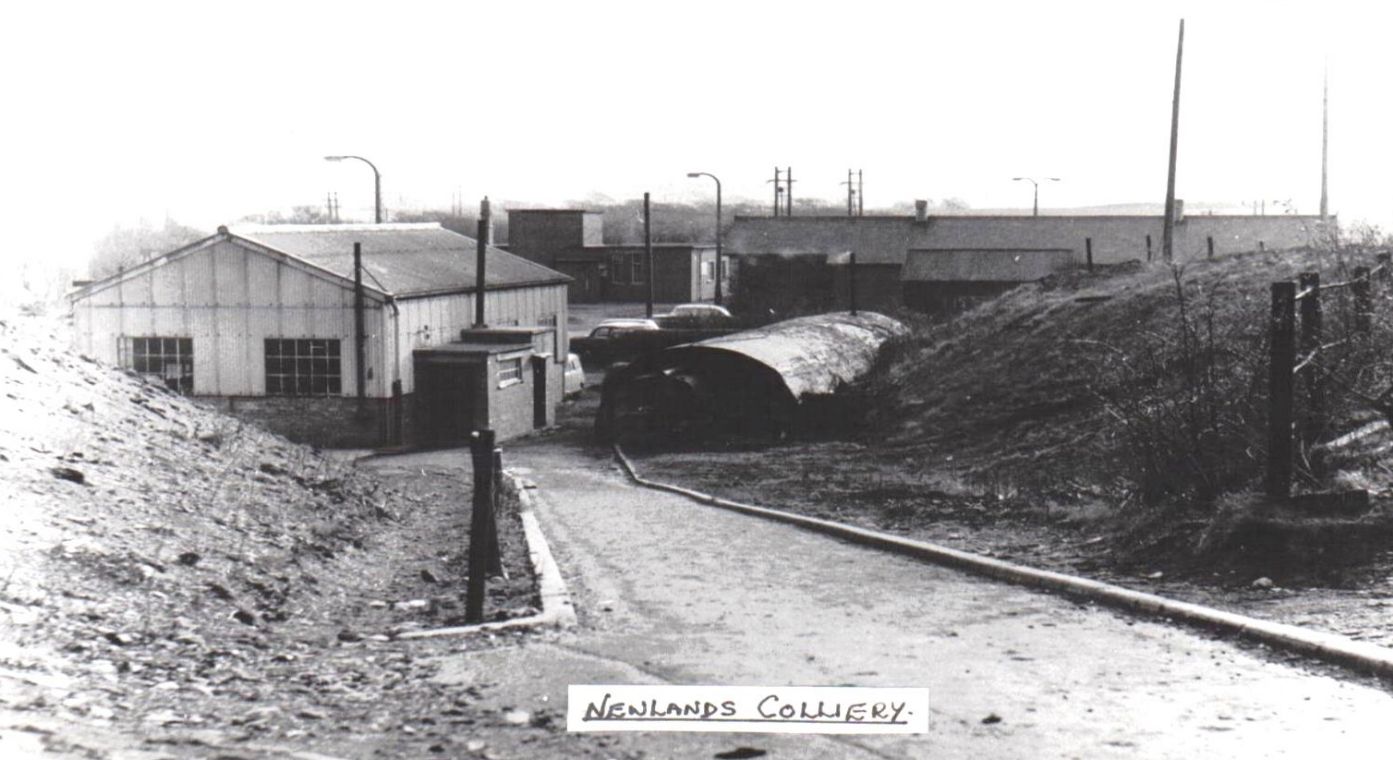 Pyle, near Bridgend (SS 8104 8349)
Pyle, near Bridgend (SS 8104 8349)
This was a drift mine that was driven into the Upper-Nine-Feet seam in 1918 by the Cribbwr Fawr Collieries Limited of Salisbury House, Swansea and worked along with the Cribbwr Fawr Colliery. It eventually reached down to the Gellideg seam which was at a depth of 759 feet 7 inches. It was located approximately two miles to the southwest of Aberbaiden Colliery.
Between the Gellideg and Two-Feet-Nine coal seams, 18 main seams totalling 97.5 feet of coal in 1,200 feet of vertical strata. The seams averaged 5 feet 5 inches in thickness with an average distance of 75 feet between them. There were several abnormalities within the coal seams in this area with the normally two feet thick Gellideg seam averaging nine feet at this colliery.
The Gellideg seam was called the Cribbwr Fawr and was worked with a thickness of between 8 feet 10 inches and 9 feet 3 inches. The Upper-Five-Feet seam was known as the Nine-Feet seam and was worked. It had a thickness of up to 12 feet 5 inches. The Yard seam was called a Six-Feet seam and was worked with a thickness of 54 inches. The Upper-Nine-Feet seam was known as the South Fawr seam and was extensively worked. It had a thickness of between 10 feet and 13 feet. The Red Vein seam was known as the North Fawr seam and was worked at a thickness of between 46 inches to 52 inches.
A small area of the Caerau seam, which was called the Cae Garw seam at this colliery, was worked at a thickness of between 60 inches to 72 inches. Just to confuse you more the Two-Feet-Nine seam was also called the lantern seam, and the Upper-Four-Feet seam was the Bower Fawr seam. The Lower-Four-Feet seam was called the Bodwr Fach seam, the Six-Feet seam was also called the Esgyn or Caegarw seam. The Bute seam was known as the Drydydd, the Seven-Feet seam was the Slatog Fach while the Slatog Fawr seam was the combined Five-Feet/Gellideg seam. Based on the Nine-Feet seam this colliery’s coals were classed as type 301B Prime Coking Coals for use as a foundry or blast furnace coke.
On the 2nd of November 1927, G.L. Rees, aged 20 years, and a dumper was killed in a conveyor accident. On the 4th of July 1928, Edward Look, aged 46 years, and a collier died under a roof fall. On the 9th of August 1928, John Evans, aged 44 years, and a repairer died under a roof fall. While on the 2nd of July 1936, Brinley Yewer was aged only 15 years, and a collier’s boy, when he was killed under a roof fall.
In 1935 Newlands employed 100 men on the surface and 700 men underground working the South Fawr seam for house, manufacturing and coking coals with the manager being James Lewis. In 1945 the manager was G. Jenkins.
In 1935 the Cribbwr Fawr Collieries Limited was based at Salisbury House, 45 Wind Street, Swansea with the directors being; Colonel Sir William Charles Wright, Colonel John Beaumont Neilson, Sir John Field Beale, F.J. Elliot, J.S. Hollings and C.H. Keen.
In 1943 this colliery employed 510 men working underground in the Slatog, North and South Fawr’s, Caegarw and Six-Feet seams and 127 men working on the surface of the mine. In 1944 the under-manager received the Edward Medal in Silver and a repairer received the BEM for outstanding gallantry in rescuing two men trapped under a roof fall.
On Nationalisation of the Nation’s coal mines in 1947, Newlands Colliery was placed in the National Coal Board’s, South Western Division’s, No.2 Area, South Group, and at that time employed 108 men on the surface and 517 men underground working the Slatog and Caegarw seams. The manager was G. Jenkins.
In 1949 the agreement for the North Fawr seam price list gave the collier a four-yard long stent in a four-foot seam advancing by 4 feet six inches a shift and giving eight tons of coal a day. In that year the manager was still G. Jenkins.
In 1954 the colliery employed 103 men on the surface and 526 men underground working the Slatog, Caegarw, and North Fawr seams for coking coals. The manager was still Mr. Jenkins. This colliery had its own coal preparation plant (washery). In 1955 Newlands Colliery employed 365 men working at the coalfaces, in 1956, 314 men were working at the coalfaces and in 1958 284 men were slaving away at the coalfaces at this colliery.
The opening of the Margam Steelworks was a major factor in the decline of manpower at this colliery, in one week in 1956 thirty men finished going to work at Margam with further recruitment at the mine failing to fully fill the gaps. Newlands Colliery was closed by the National Coal Board on the 22nd of March 1968. Out of the 337 men remaining at closure, 180 were transferred to Garw, Ffaldau and St. John’s collieries, 40 remained on salvage work and the rest were made redundant.
Some Statistics:
- 1923: Manpower: 353.
- 1924: Manpower: 611.
- 1925: Manpower: 900 with Cribbwr Fawr.
- 1928: Manpower: 630.
- 1932: Manpower: 800.
- 1933: Manpower: 690.
- 1935: Manpower: 800. Output: 170,000 tons.
- 1937: Manpower: 873.
- 1938: Manpower: 816.
- 1945: Manpower: 637.
- 1947: Manpower: 625.
- 1948: Manpower: 629. Output: 130,000 tons.
- 1949: Manpower: 653. Output: 130,000 tons.
- 1950: Manpower: 629.
- 1953: Manpower: 692. Output: 125,000 tons.
- 1954: Manpower: 629. Output: 149,000 tons.
- 1955: Manpower: 714. Output: 147,425 tons.
- 1956: Manpower: 669. Output: 145,000 tons.
- 1957: Manpower: 672. Output: 145,846 tons.
- 1958: Manpower: 635. Output: 113,694 tons.
- 1960: Manpower: 520. Output: 107,837 tons.
- 1961: Manpower: 509. Output: 99,026 tons.
- 1964: Manpower: 495.
Information supplied by Ray Lawrence and used here with his permission.
Return to previous page
